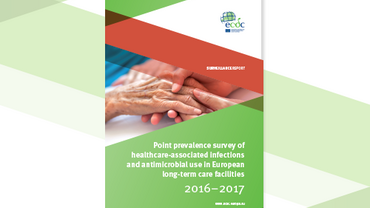Systematic review of the effectiveness of infection control measures to prevent the transmission of extended-spectrum beta-lactamase-producing Enterobacteriaceae through cross-border transfer of patients
Extended-spectrum β-lactamases (ESBL-E) are associated with an increase of morbidity, mortality, and healthcare costs. Identifying effective infection control measures is an important step in order to prevent patients from becoming colonised or infected with these multidrug-resistant organisms. This systematic review seeks to identify evidence for the effectiveness of targeted infection control measures to control the spread and transmission of ESBL-E when transferring patients between healthcare settings, especially when the transfer is cross-border. Evidence from this review will be used by ECDC to develop guidance on this topic to help curb the transmission of ESBL E into healthcare settings.
Executive summary
Enterobacteriaceae that produce extended-spectrum β-lactamases (ESBL-E) carry plasmid-encoded enzymes that can efficiently hydrolyse and confer resistance to a variety of β-lactam antibiotics, but not to carbapenems or cephamycins. These enzymes are predominantly found in Escherichia coli ( E. coli ) and Klebsiella pneumoniae ( K. pneumoniae ), although present also in other members of the Enterobacteriaceae.
The emergence and spread of ESBL-E is a public health threat, especially because infections caused by ESBL-E are associated with an increase of morbidity, mortality, and healthcare costs. Curbing the spread of ESBL-E in healthcare facilities after their importation is important – as is controlling transmission in areas where they have become endemic – because they are associated with poor patient outcomes. Identifying the infection control measures that are effective is an important step in order to prevent patients from becoming colonised or infected with these multidrug-resistant organisms (MDROs). Although some European countries have addressed the spread of ESBL-E by creating new or modified guidelines/strategies for other MDROs, or national/local task forces, few official guidelines or guidance documents relating to infection control measures for ESBL-E have been published.







